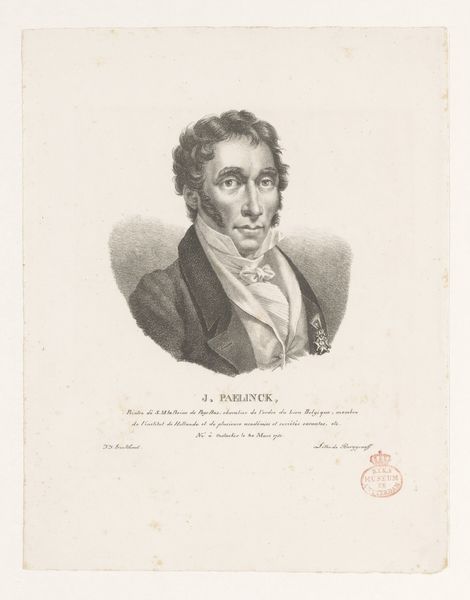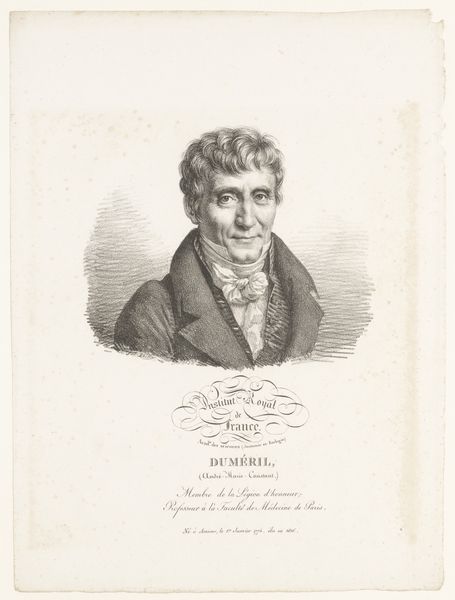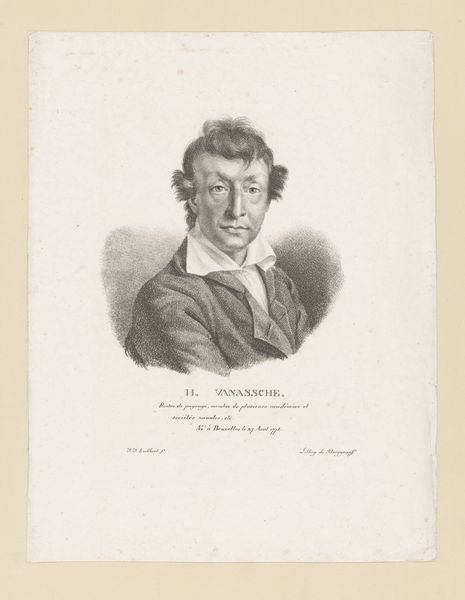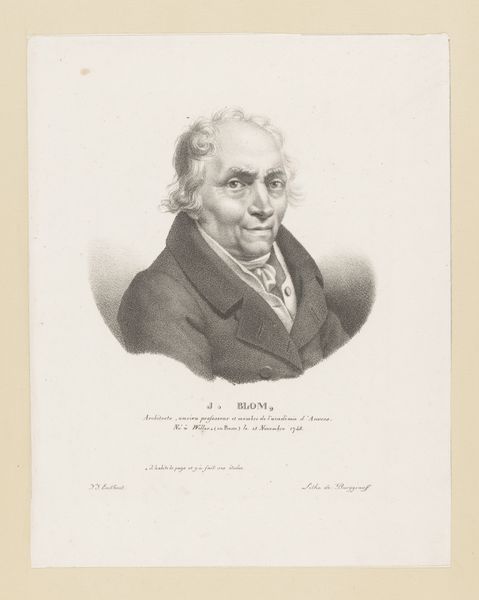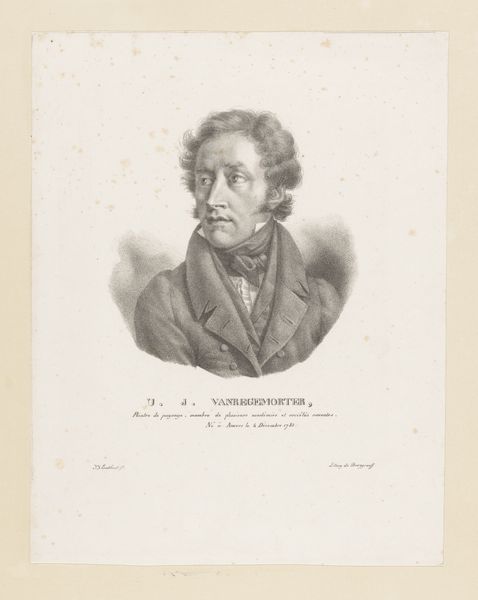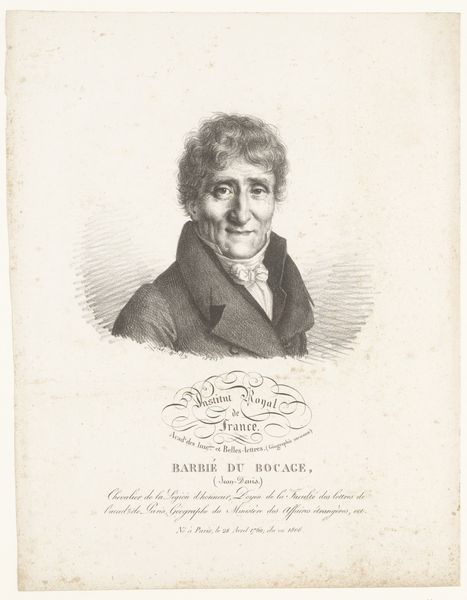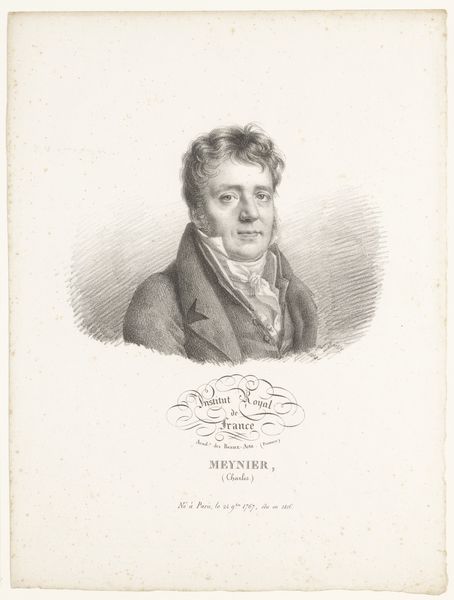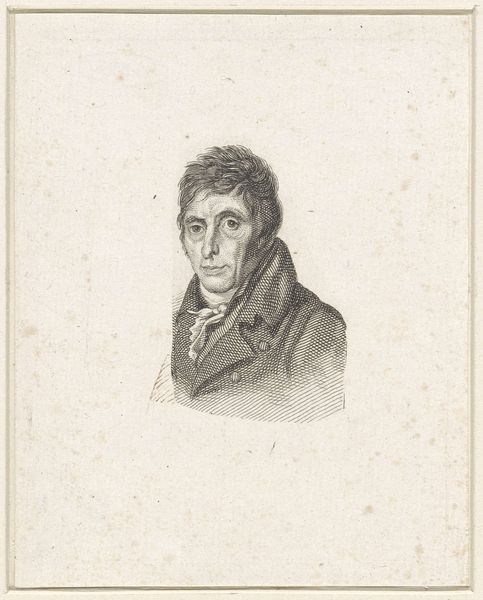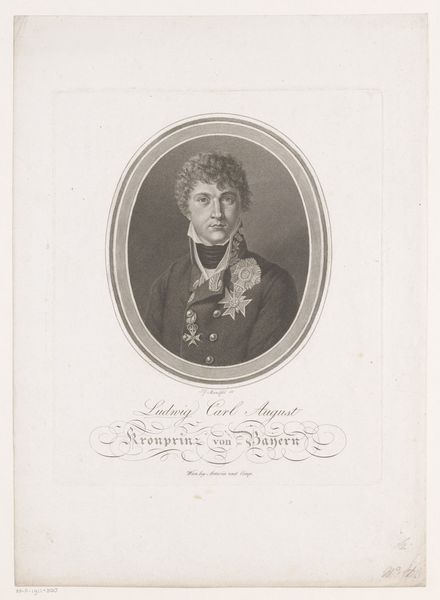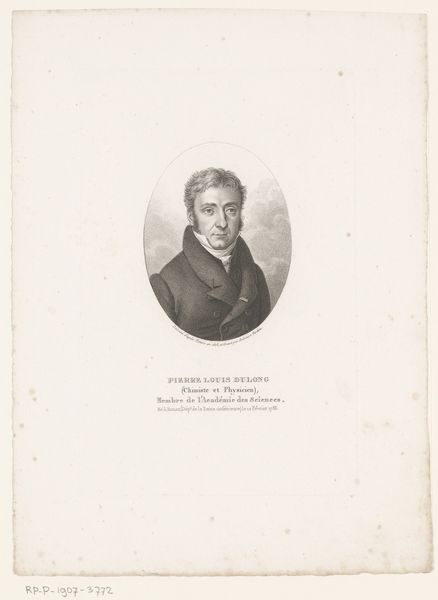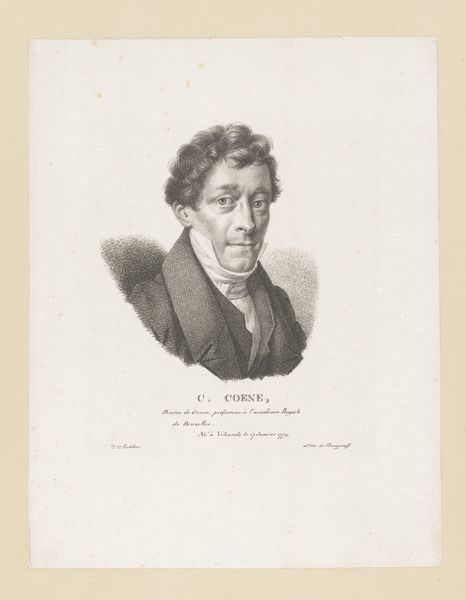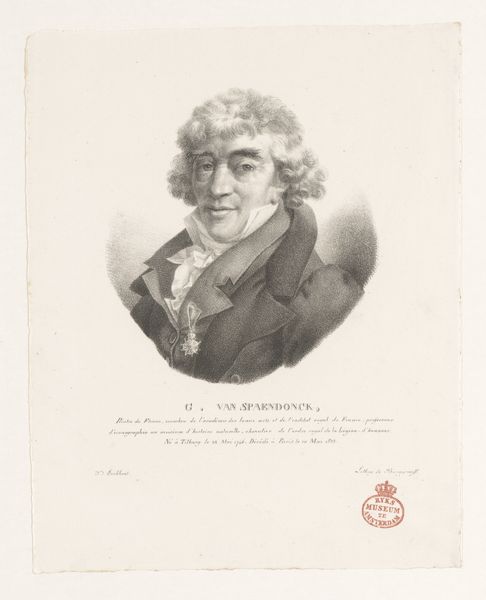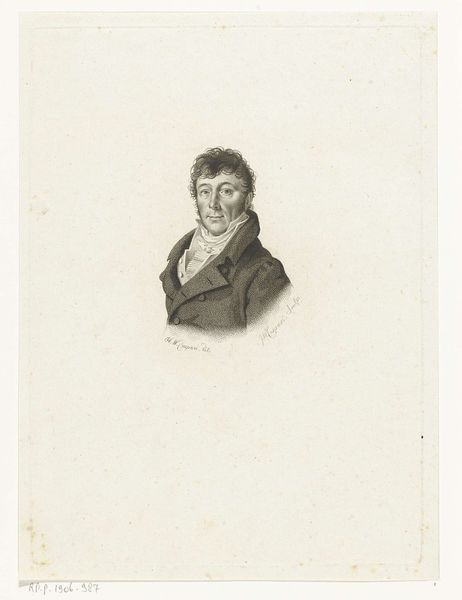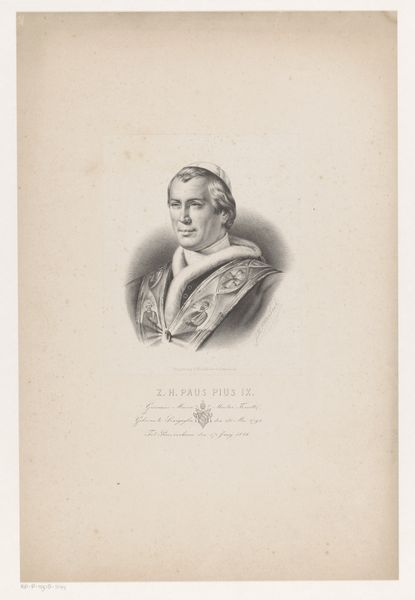
drawing, lithograph, print, graphite
#
portrait
#
drawing
#
neoclacissism
#
lithograph
# print
#
graphite
Dimensions: height 307 mm, width 240 mm
Copyright: Rijks Museum: Open Domain
This portrait of Balthasar Paul Ommeganck was made by Guillaume Philidor Van den Burggraaff, around 1790, using lithography. Lithography is a printmaking technique that relies on the simple principle that oil and water don't mix. The artist draws an image with a greasy crayon on a flat stone or metal plate. The stone is then treated with chemicals so that only the drawn image attracts ink. When the surface is inked and pressed against paper, the image is transferred. The lithographic process allowed for relatively quick and inexpensive reproduction of images, making art more accessible to a wider audience. This reflects a shift towards industrialization and mass production, challenging the traditional art world where works were unique and expensive. The very nature of lithography—its dependence on mechanical reproduction—democratizes the image, detaching it from the aura of the unique artwork. It's a fascinating example of how material and process can embody social and cultural shifts.
Comments
No comments
Be the first to comment and join the conversation on the ultimate creative platform.
